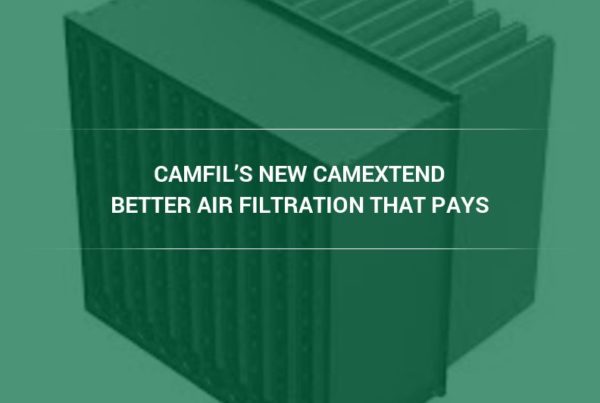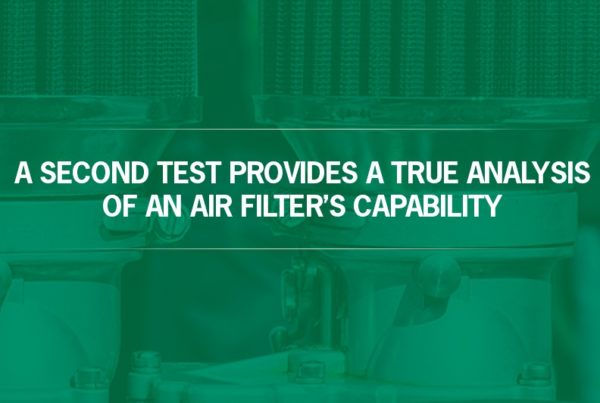Camfil Filtration Systems Help Hospitals Help Their Patients
If you go to your local hospital’s emergency room (ER) it’s probably because of an accident, serious illness or other healthcare crisis. You have enough going on and don’t want to contract an infection from the hospital or those around you. Hospitals can take many precautions to prevent infections, one of them is keeping the air patients, visitors and staff breathe as healthy as possible with the help of Camfil air filtration systems.
In addition to being where urgent health care is given ER’s often are places of primary medical care for the indigent and those without health insurance. The federal Centers for Disease Control and Prevention (CDC) estimate that in 2011 there were 136.3 million visits to the nation’s emergency departments (out of an estimated population of 311 million).
With this massive demand for services and millions of unhealthy people passing through the doors of these departments it should come as no surprise that hospital acquired infections have become a serious issue. The CDC surveyed hospitals and found that in 2011,
- On any given day about one in 25 hospital patients has at least one healthcare-associated infection (HAI).
- There were an estimated 722,000 HAI’s in U.S acute care hospitals.
- About 75,000 hospital patients with HAI’s died during their hospitalizations.
The use of Camfil air filtration systems can help reduce the risk of HAI’s by controlling the amount of airborne pathogens breathed in by patients, visitors and staff, according to Camfil air filtration expert Charlie Seyffer, “Your exposure increases as the number of occupants with maladies are in close proximity to you. Unfortunately, part of the nature of an ER is that people are there because they have a problem.”
Those problems could include potentially fatal infectious diseases being spread by people who easily travel around the globe. “The ER’s in the U.S. have developed reactionary plans to address what should happen to protect patients, employees and visitors if an Ebola case or something along those lines comes to an American city.”
Seyffer says once someone is diagnosed with a highly contagious disease the patient is often isolated within the ER “ER’s are like a city unto themselves,” Seyffer says, “With all sorts of precautions in place to protect us but we should also take precautions to protect ourselves.” He suggests if we sneeze or cough to cover ourselves to protect others.
Seyffer says modern hospital air filtration systems have many parts. MERV 8 pre-filters can catch bacteria and dust before they get into the main HVAC systems. That’s important because those system create water, in which bacteria can spread. Downstream there should be MERV 14 filters capable of stopping 78% of very small particles .3 microns in size (about one three-hundredth of the width of a human hair). It’s also become more common that hospitals are using HEPA filters to clean the air.
“Viruses are so small that these filters cannot capture them but normally viruses attach themselves to other things and that’s how we remove them.” Seyffer says the filtration is not simply the use of a filter but sending air through it. “The common office area has about six air changes per hour. The fans in these emergency suites are very high level. They can have thirty to fifty air changes per hour.”
Seyffer says hospitals should use Camfil air filters with a MERV-A rating to ensure that the filter maintains its efficiency.
If you have a choice, Seyffer suggests you may want to use a newer or renovated hospital because the chances are better it will have a more modern HVAC system with a wide range of air quality controls. One tool you can use to see how well your local hospitals address HAI’s is through a rating system by the federal Centers for Medicare & Medicaid Services.
Seyffer says, “Most hospitals, 99%, are doing the right thing. We want to go to the hospital to be cured, not leave the hospital with something we didn’t go to the hospital with.”
You can learn more about how Camfil helps hospitals and medical facilities keep their air safe and their patients and staff healthy by visiting their website.
The world leader in air filtration systems, Camfil provides clean air solutions for hospitals, hotels, office buildings, educational institutions and pharmaceutical and biotech companies. We provide the tools to achieve sustainability, maintain high air quality and reduce airborne particulates, all while lowering total cost of ownership. For more information, visit us online at www.camfil.us or call us toll-free at 888.599.6620.
Media Contact
Lynne Laake
Camfil Air Filters USA
News Provided By: Submit Press Release 123
Media Contact: Lynne Laake, Camfil, 888-599-6620,Lynne.Laake@camfil.com



